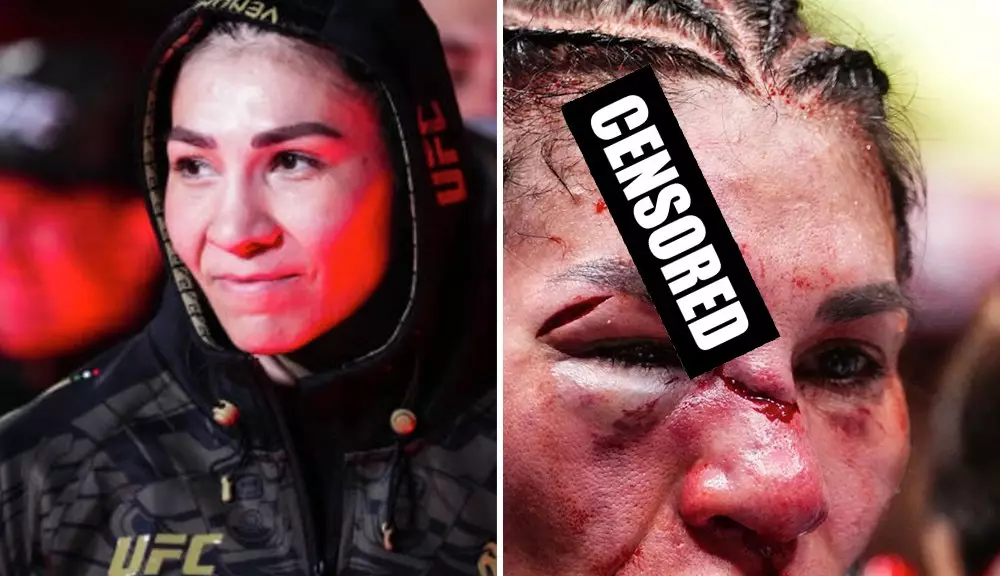Mixed Martial Arts (MMA), particularly in organizations like the UFC, has long been known for its high-octane action and unpredictable outcomes. However, the recent bout between Norma Dumont and Irene Aldana at UFC 306 serves as a stark reminder of just how violent this sport can be. Set against the backdrop of the technologically advanced Sphere venue in Las Vegas on September 14, 2024, the fight culminated in a chaotic scene that was shocking even for seasoned fans: Aldana suffered a severe cut that exposed her skull, widely regarded as one of the most horrific injuries in the history of the UFC.
The raw nature of this event spurred discussions about the inherent risk associated with combat sports. While fans celebrate knockouts and submission victories, the consequence of going toe-to-toe is an unvarnished reality. The images and videos surfacing from the conflict left many uncomfortable, showcasing the darker side of a sport that requires immense physical prowess and mental fortitude.
From the outset, it was clear that the fight was heavily one-sided. Norma Dumont decisively dominated Aldana, dictating the pace and controlling most of the exchanges. Aldana’s struggles were evident; it seemed as though she was perpetually on the defensive, unable to find her rhythm against Dumont’s relentless onslaught.
While Dumont’s tactical execution was impressive, the sheer brutality of the fight highlighted the risks inherent to MMA. Mixed martial artists are trained to endure pain and push beyond their limits, but what happens when an athlete’s body reaches its breaking point? In this particular bout, Aldana’s challenges culminated in a catastrophic injury that not only influenced the fight’s outcome but may also have long-lasting repercussions for her career and personal life.
Reports indicate that the deep laceration on Aldana’s forehead will likely necessitate significant medical intervention, including potential plastic surgery. This aspect leads into a more profound inquiry about athlete well-being post-fight. Aldana’s brutal injury raises questions about the long-term health risks associated with fighting, particularly concerning head trauma. Injuries sustained in the octagon can have effects that extend far beyond what is visible to the naked eye, affecting cognitive functions and overall quality of life.
Moreover, Aldana’s defeat—especially marked by such a gruesome injury—may impact her confidence, mental health, and status as a contender in the women’s bantamweight division. The psychological toll of a fight such as this, compounded by her physical wounds, may alter her career trajectory. Fighters often face both immediate and long-term consequences, but it takes incidents like these to ignite conversations about the need for better safety protocols and health safeguards.
The harrowing visuals and aftermath of Aldana’s injury have not only sparked intense discussion among fans but also among regulators and the fighters themselves. It emphasizes the necessity for MMA organizations to continually evaluate fight safety standards and medical protocols. As the sport expands globally and gains even greater popularity, keeping fighter safety at the forefront becomes paramount.
This event serves as a cautionary tale for current and aspiring fighters about the brutal reality of their chosen profession. While the allure of fame, fortune, and respect remains, the physical sacrifices demanded by the sport cannot be understated. MMA fighters are incredibly skilled and brave, but they are also individuals who risk their lives for the excitement and entertainment of others.
UFC 306’s encounter between Norma Dumont and Irene Aldana remains a vivid illustration of the violent reality of mixed martial arts. The extreme injuries that athletes can endure come with high stakes, calling for a balance between the thrilling nature of the sport and the safety of its participants. As fans, we must acknowledge the courage and dedication these fighters display, while also advocating for their health and safety in an industry where the line between victory and tragedy can be perilously thin.

